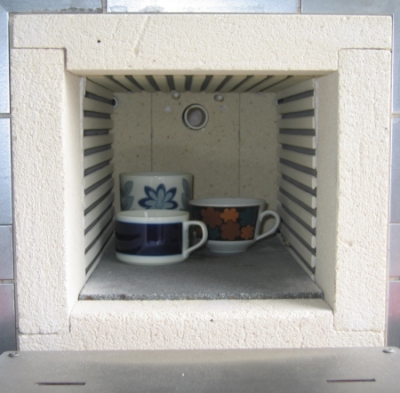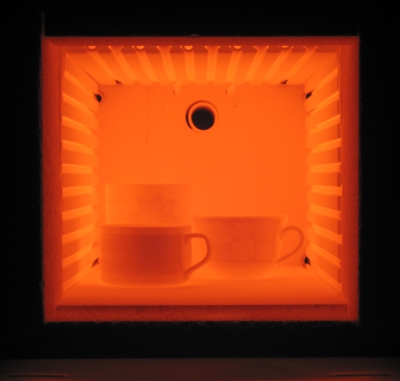2. Thermal Radiation
Absorption and emission: Kirchhoff's radiation law (2/4)
The colour of objects
The reflection of radiation has not been taken into account so far. The relevance of absorption, emission and reflection can be illustrated by the help of a kiln and some cups of different colours.
The cups do not emit visible light themselves. It is rather the incoming daylight or the indoor's lighting which is reflected to a different extent by the glaze on the cups' surfaces. Technically it is just the light which is not absorbed by the colourful glaze that is reflected. As soon as the reflection is in the blue, the green or the red spectral range, the glazes appear to be blue, green or red. This is why the cups are colourful.
In the next step the room is darkened. Colours can no longer emerge from reflection and absorption of the daylight. Inside of the oven, there is a nearly isolated cavity created similar to the one mentionend on the previous page. Heatened to red heat the following picture will be revealed when opening the door.
The cups and the inner walls of the oven gleam red due to the high temperature. The drawings of the glazes are hardly visible, the degree of emission thus is not the same in every spot. According to that, the cups are rather grey bodies than perfect black ones. In the foreground, they appear slightly darker what indicates lower temperatures due to the loss of heat through the open door. The structures of the side walls of the oven gleam in different manners as well. The thermal equilibrium is therefore not perfect.
If the cups and the walls were ideally black bodies of the exact same temperature, they would have the feature of an homogeneous colour and brightness. The cups in front of the inner oven walls would be invisible.


